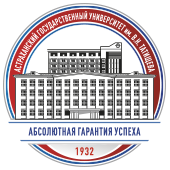Interview with Inventor
Interview with Mr. Egit Musaev, Supervisor of the research project “Robotized Trainer for People with Locomotorium Disorders”, Key Specialist of the Center of Viable Technologies in Electronics & Robotics of Astrakhan State University.
– Could you please tell us about the essence of your project?
– The name of our Center used to be “Research & Educational Center of Instrument Engineering & Medical Equipment”; it was renamed not long ago. Our developments mainly concerned improvement of human health.
At first, we carried out our project together with the Astrakhan Regional Center of Social Rehabilitation “Rus”, which is involved in similar activities. We had several joint developments. For example, we created a verticalizer that lifts patients who are unable to move themselves.
Our robotized trainer aims to develop joints after locomotorium injuries. A physician usually does that manually, by means of gymnastic exercises. Our device helps obtain a patient’s biometric data and apply it for their rehabilitation. For example, a patient can’t raise their arm at the initial stage. We install muscular activity sensors on that arm; the device fixes that activity and tries to “help” a patient move their arm, thus developing the joint. Afterwards, when a patient begins to recover, the device impacts less actively; it may even counteract movement at the final stage of recovery. The value of our invention is that is works considering with biophysics of a particular patient.
– What was the object of your patent?
– We developed the very technical task. We patented the trainer that includes the control panel, the driving construction, and the instrument that reads biometric information related to a patient’s muscular activity, joints movement speed, efforts that extremities make, and the impact exerted on them.
– What are the prospects of your research?
– There are some indirect analogues of our device. In particular, a trainer may be installed, and physicians move their patient’s extremities themselves. However, a physician can’t feel what their patients feel; even if they ask their patient about their feelings, the response will be based on subjective perception, which is quite often wrong. In contrast, our development is based on biometric data, which are objective.
I’d remark that similar devices are developed outside Russia, for example, in Switzerland. Given a high cost of details that foreign developers apply and a solid funding, as well as an acute issue of import substitution, I’d say that our project is surely viable and competitive. It’s not just a manipulator; it’s a construction responsible for human health. All its details must be exact and precise to eliminate any probability of doing patients any harm. Besides, we should take care of certification, consider with all the legal nuances, and so on. That’s why we can’t say now when our project will be complete; its realization may take a long time. We’re going to apply for a grant of about 2m rubles; if it’s backed, we’ll be able to develop our construction completely. We’re planning to equip our trainer with game elements: for example, a patient will be suggested to repeat movements of a tennis player, whom they will see on their screen.
– What would you wish young researchers?
– If you are developing something, you shouldn’t try to do everything at once. Develop a clear and distinct plan and stick to it!
Interviewed by T.Yu. Gavrilkina (the Web Resources Information Support Directorate of ASU)
Photos from Mr. Egit Musaev’s personal archive
Translated by E.I. Glinchevskiy (the Center of Translation Studies & Conference Interpreting “ASTLINK” of ASU)




